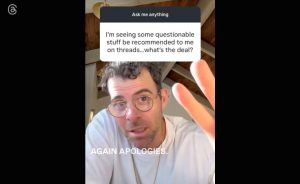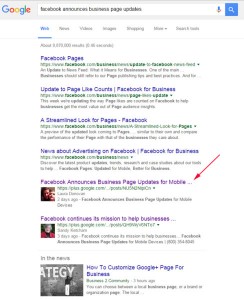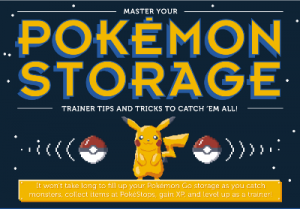Yes, print news consumption is in a funk, but columnist Megan Hannay explains how journalists and brands can actually help each other.

With each new issue, “all the news that’s fit to print,” the famous New York Times slogan, comes closer to an anachronism. Earlier this year, Pew Research Center reported that traditional newsroom staff shrank by 10 percent in 2014, with average weekday print news consumption falling seven percent in 2015.
On the surface, this seems like a scary forecast for local news. After all, local TV is seeing similar decreases.
But as any journalist would ask, what are stats without a story? So for this piece, I spoke with two journalists — Lewis Beale, an industry veteran whose career drastically shifted in the digital age, and Mary Miller — who spearheads a group to lead the next generation of local journalists.
From Beale and Miller, I learned that the digitization of news has affected local writers, but that high-quality, ethically crafted branded content can fill in the gaps.
Content is the product, even for journalists
My colleague, Garrett French, has a frequent saying: “Content is a product.” This adage comes in handy when explaining to clients why his agency charges for content creation.
But I was surprised to hear Miller echo French’s words when referring to modern journalism. For so long, journalistic content has been held to higher standards than supply and demand. But with established publications losing ground, and free content sites gaining in popularity, each piece must now stand on its own merits, not those of its publication.
“The quality is in the creation of the journalism, not necessarily where it lands,” Miller said.
Journalists can no longer depend on the audience as a given. While this shift provides a sense of freedom to newcomers, who can publish on a blog or Medium.com with the click of a button, industry veterans must now learn how to anticipate audience expectations with their “product” — a concern most marketers are already familiar with.
And finding that product isn’t always obvious to its beholder. Beale, a writer for The Daily Beast and the LA Times, and formerly US Weekly, told me that he receives local PR pitches, most of which are in line with his entertainment beat.
“They have to have a good story to tell,” he said of the pitches he chooses to develop. “The bottom line is, everybody who pitches you thinks they have a great story, but they actually don’t.”
But Beale, showing his writer’s instinct, added that sometimes he seeks out the gem of a story buried in a PR pitch.
“I had a middle-aged black woman who made a feature film and wanted me to write a story about it,” he said. “She only cast female actors of color over age 35. And she told me she had been so strapped for cash while making this film that she slept in her car for two months. I said, ‘That’s the story.’ Sometimes people think they know what the story is, but it’s not.”
A new checkbook behind local journalism: brands?
On the one side, we have brands, which need proper storytelling to sell their products. And on the other side, we have professional storytellers, who just need a medium (any medium!) and a budget.
Brands can help journalists with technology
As more journalists move to freelance, they’re faced with learning every aspect of their industry.
“All of these journalists have been laid off, but they still want to do this work because they believe in it,” Miller said. “[But] you have to write, you have to do audio, you have to do visual, you have to be able to do mobile. There’s a steep climb on the technology side.”
Not to mention, she added, the know-how it takes to run an independent business, such as filing proper taxes and taking care of health insurance. These are some of the needs that Miller and her partners hope to solve with their nonprofit, the NC Newsroom Cooperative. But there’s another solution for local journalists, one that would provide the technology resources, and eliminate their business concerns:
Journalists can help brands with their story
Already, local news publications have invested in storytelling for hire, such as the Dallas Morning News’ content agency, Speakeasy. Others have gone the nonprofit route, offering underwriting opportunities to businesses. On a smaller scale, brands have hired journalists to run content creation.
Miller gave an example of a reporter who used to work for Raleigh’s News & Observer as a lifestyle columnist. This journalist, Joe Miller, now creates North Carolina-centric content for BlueCross BlueShield of NC. Since quality content can be platform-agnostic, brands have the opportunity to ethically enter a once heavily gated arena.
“Journalists are valued for telling the story — and sometimes they’re denigrated for telling the story — but they’re not valued for the ability to see the story,” she said. “That is a real skill. It is something that is not just skill; I think it’s craft.”
For businesses, a storyteller with a sense of “the craft” can turn a what into a who. Beale said that in his experience, business stories are much more interesting when they’re personified.
“That’s what businesses have to do,” he said. “‘I see this guy coming to work every day with a motor scooter and a tattoo of an Iggy Pop tattoo. What’s he up to?’”
The ethics of marrying journalists & brands
Branded content is still a scary proposition — for journalists and for businesses.
Good writers want to maintain their ethical standards, and in the age of social media-enforced brand transparency, the idea of a misleading advertorial is unappealing to many marketers. Anticipating this awkward dance, Edelman even developed an “ethical framework” for sponsored content in 2013.
While branded storytelling is still in its infancy, it’s an exciting proposition for people who love all the local news fit to tweet.
If you want to hear more from Mary Miller, you can listen to the entirety of our conversation on the ZipSprout Local Marketing Podcast.
Some opinions expressed in this article may be those of a guest author and not necessarily Marketing Land. Staff authors are listed here.
Marketing Land – Internet Marketing News, Strategies & Tips
(18)







